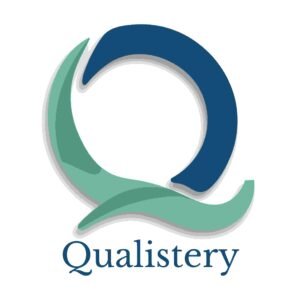Introduction
A staggering proportion of medicinal products, including vaccines, biologics, and certain pharmaceuticals, are inherently temperature-sensitive, necessitating stringent storage conditions to preserve their therapeutic efficacy.
Consequently, the cold chain emerges as a pivotal element in the pharmaceutical supply chain, ensuring that these temperature-sensitive products are meticulously managed from manufacture to patient administration, maintaining their quality, safety, and potency.
The Auditor’s Lens: Scrutinizing Cold Chain Management
Imagine wearing the hat of an auditor tasked with ensuring that a company’s cold chain management adheres to regulatory standards. What would you seek?
Auditors immerse themselves in the intricate details, meticulously ensuring that storage conditions are in strict alignment with regulatory guidelines. But let’s demystify this – what does this scrutiny entail in tangible terms?
In the following sections, we will delve deeper, unraveling and analyzing the European regulations and guidelines that meticulously dictate the temperature storage requirements in the pharmaceutical domain, providing a comprehensive guide to navigating through the complexities of remaining complaints throughout the entire lifecycle of temperature-sensitive products.
Navigating Through European Regulations
– EU GMP Guidelines: A Beacon for Manufacturing and Storage
The European Union’s Good Manufacturing Practice (EU GMP) guidelines stand as stringent regulations, not mere recommendations, that govern the manufacturing, quality control, and assurance of medicinal products within the pharmaceutical industry in Europe.
These regulations are legally binding and must be adhered to by pharmaceutical companies operating in the EU to ensure that their products consistently meet the required quality standards, safeguarding public health.
Failure to comply with EU GMP regulations can result in legal consequences, including fines, sanctions, and, potentially, the revocation of manufacturing licenses.
Part 1 Chapter 3: Premises and Equipment
3.3 Premises: The guideline highlights the necessity of optimal lighting, temperature, humidity, and ventilation to safeguard medicinal products during manufacture and storage.
3.19 Storage Areas: It mandates that storage areas should be designed to ensure good storage conditions, maintain cleanliness and dryness, and stay within acceptable temperature limits, with special conditions monitored and checked.
– European GDP: Ensuring Quality Beyond Manufacturing
The European Union’s Good Distribution Practice (EU GDP) guidelines are regulations that dictate the proper distribution practices for medicinal products within the pharmaceutical industry across Europe. These regulations are legally binding and non-compliance can result in legal consequences.
Chapter 3: Premises and Equipment
This section mandates that premises should be designed or adapted to maintain the required storage conditions.
3.2.1 Temperature and Environment Control: Proper equipment and procedures should be in place to monitor environmental factors where medicinal products are stored. It also mandates temperature mapping of storage areas.
Chapter 5: Operations
5.5 Storage: The guideline emphasizes protecting medicinal products from harmful effects of light, temperature, and moisture, especially those requiring specific storage conditions.
Chapter 8: Self-inspections
It remarks the importance of monitoring GDP guideline implementation (including the storage requisites) through self-inspections.
– WHO Model Guidance for the storage and transport of time and temperature sensitive pharmaceutical products: A Global Perspective on Storage and Transport
The World Health Organization’s (WHO) Model Guidance serves as a recommendation and is not legally binding. It provides a framework of best practices and standardized approaches intended to maintain the quality and safety of pharmaceutical products during storage and transportation.
While it is globally recognized and widely adopted, compliance with the WHO Model Guidance is not mandated by international law. However, it is often utilized as a benchmark and reference point for developing national guidelines and regulations pertaining to the pharmaceutical cold chain.
Chapter 4: Temperature-Controlled Storage
The guidance delineates recommendations for refrigerators and freezers, emphasizing the necessity of maintaining the required temperature, deploying calibrated temperature monitoring devices, equipping with alarms for temperature deviations, and ensuring qualification.
Conclusion: Weaving Regulatory Threads into Cold Chain Management
Navigating through the regulatory landscape of cold chain management is akin to traversing through a complex maze, where every turn represents a guideline, a recommendation, or a mandate that ensures the quality of pharmaceutical products is preserved.
From the EU GMP guidelines that lay down the foundation for manufacturing and storage, the European GDP, to the WHO model guidance that provides a global perspective on storage and transport, each regulatory framework stitches together a safety net that safeguards the quality of pharmaceutical products.
As professionals working in the pharma industry, understanding, interpreting, and implementing these guidelines not only ensures regulatory compliance but also safeguards the very essence of pharmaceuticals – the health of patients.
Join us for an informative webinar to learn more about the latest innovations and the best practices in freezer technologies in GMP:

With a dedication to serving the pharmaceutical industry, Qualistery specializes in hosting informational webinars that support both professionals within the pharma sector and service providers. Our commitment lies in empowering businesses to maximize their impact through engaging virtual events and strategic webinar solutions. Additionally, Qualistery supports life science companies through private GxP training and compliance services.








